
Hyundai i20 Hatchback (2015-2020) engines, drive and performance

- Small engines, manual or automatic gearboxes
- Our pick is the 1.0 T-GDi petrol
- Diesels dropped in 2018
At launch, three petrol and two diesel engines were responsible for the Hyundai i20’s performance, though late in 2015 a new three-cylinder 1.0-litre turbocharged petrol engine joined the line-up. This quickly became the only engine worth considering in the i20 line-up, and remains so following the 2018 facelift.
Hyundai i20: petrol engines
Our pick of all the engines ever offered on this generation of Hyundai i20 is the 1.0-litre T-GDI three-cylinder petrol with 100hp and 172Nm of torque. This offers ample performance (0-62mph in 10.8 seconds) and far better running costs than the rest of the line-up.
Its off-beat thrum – a product of its three-cylinder configuration – is an appealing part of driving the i20, and adds valuable character to what is admittedly a bit of a staid design otherwise.
We’ve tried it with the five-speed manual gearbox and in this set-up it was impressive around town. It had to work quite hard to reach motorway speeds, though, and would have benefitted from another speed in the gearbox above 65mph.
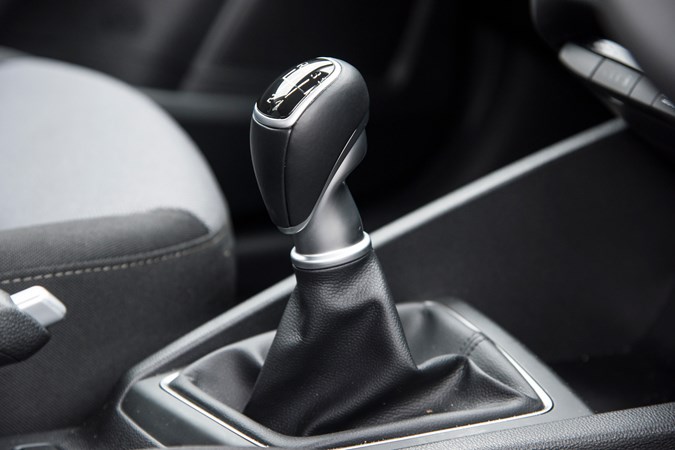
You can choose the 1.0-litre motor with a seven-speed automatic gearbox too, but we’ve yet to test this model.
Entry to Hyundai i20 ownership at launch was via the 1.2-litre petrol (only available with S or S Air models) with 75hp and 122Nm of torque. As the figures suggest, this doesn’t feel particularly quick, though it’s ample for in-town driving, and completes the 0-62mph dash in 13.6 seconds. Top speed is just 99mph.
More flexible is the 1.2-litre model with 85hp, though it too only boasts of 122Nm of torque, and just lowers the 0-62mph time by half a second to 13.1 seconds – top speed increases to a heady 106mph, however. There’s also a 1.4-litre with 100hp, which corresponds to an 11.6 second 0-62mph time and 114mph top speed thanks to its 139Nm of torque.
Hyundai i20: diesel engines
There were two diesel models to choose from in the Hyundai i20 range from launch until facelift in 2018; one a 1.1-litre three-cylinder and the other a 1.4-litre four-cylinder engine. Producing 75hp and 90hp respectively they take 16 seconds and 12.1 seconds to finish the 0-62mph test.
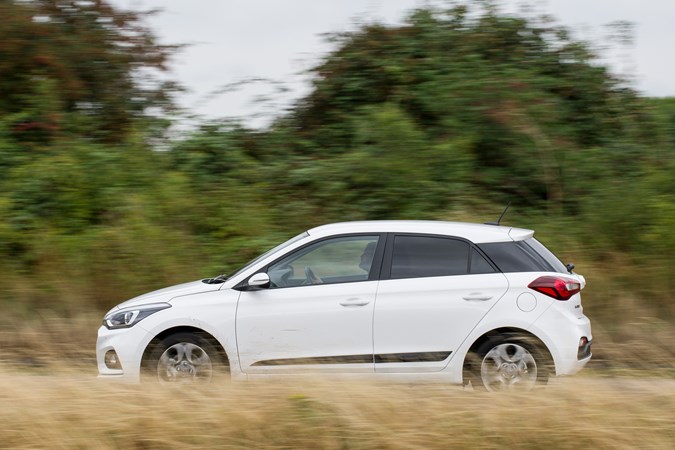
Thankfully if you choose the super-economical S Blue model, which uses the same 1.1-litre three-cylinder diesel, performance stays the same – the efficiency gains come from the start/stop system and low-rolling resistance rubber only.
The 1.4-litre is smooth and pleasingly punchy, with a decent turn of speed both inside and outside of town. For the 1.1-litre we’d recommend either planning ahead or remaining inner city, since there’s no urgency in its acceleration throughout the whole rev-range. Regardless it’s smooth, refined and quiet (though not as hushed as the petrol models), and in town provides all the shove you’ll need.
Both five- and six-speed manual gearboxes perform much like the rest of the car, which is to say they’re light in shift and easy if unremarkable to use.
The Hyundai i20 models we’ve tested
Hyundai i20 hatchback Premium Nav 1.0 T-GDi (tested October 2018 by Gareth Evans)
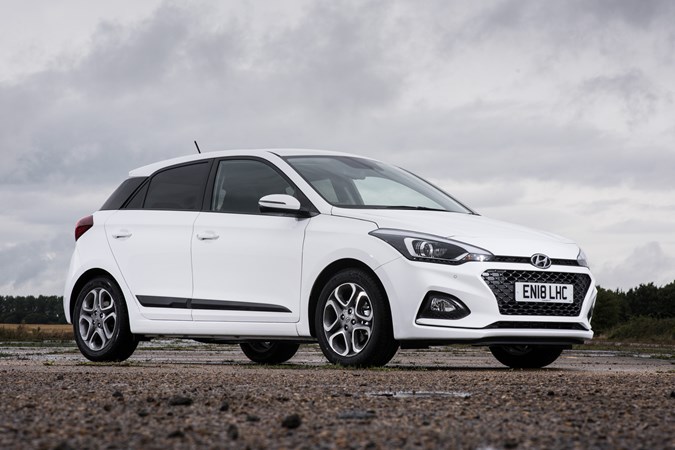
Weighing in at over £17k, this is one very expensive i20. The Premium Nav specification isn’t our pick of the range for that reason – sure, it does have a lot of kit, but actually we don’t think you really need more than you’ll find on an SE model.
The biggest addition to the spec over an SE is the touchscreen sat-nav system, but considering you get a screen of the same size (though with physical controls) on all i20s, we don’t think it’s worth the upgrade.
Things like front parking sensors, a rear-view camera, automatic wipers and tinted rear windows are nice to have, but not in any way essential to the types of job an i20 will be put toward.
The 1.0-litre, three-cylinder petrol motor in this car is the best of the bunch, though – its 100hp and 172Nm of torque are enough for a 0-62mph dash in 10.8 seconds, which isn’t exactly Ferrari pace, but it does so in a peppy, characterful manner that makes the i20 feel like a fun car. The handling is less interesting, of course, but this isn’t a machine built for keen drivers. It’ll suit those who are looking for a relaxed car that’s easy to drive.
 The Parkers Verdict
The Parkers Verdict
We’d suggest you don’t need to spend this much to get an i20 you’ll love – have a good look through the specs before making your decision.
Hyundai i20 Hatchback 1.2 Premium 5d (tested April 2015 by Adam Binnie)

The controls are light but the i20’s accurate and effortless pedals, gearshift, and steering wheel make driving in town or on a faster road an undemanding task.
Engine is a good balance of power and economy
With 83bhp the 1.2-litre petrol engine is not fast, taking 13.1 seconds to get from 0-62mph. However it doesn’t feel wheezy and can hold its own on the motorway thanks to a useful 122Nm of torque.
The i20 emits 119g/km of CO2 – meaning £30 a year VED tax – and promises 55.4mpg. In the real world it’s easy to achieve more than 40mpg without much effort.
As you would expect from a small petrol unit, there is little engine noise to report, although it does get louder as you push on. On a motorway cruise there’s a little wind noise, but you only really notice since the rest of the car is so quiet – the i20 is a relaxing car to tackle a long trip in.
Those looking for a visceral and engaging drive are better catered for elsewhere as the i20 is primarily a comfortable and relaxing experience.
Premium spec contains the essentials and a few luxuries too
Our car with Aqua Sparkling metallic paint (£495) will set you back £14,220. In Premium spec, it’s £1,000 more than the SE trim level below.
The cheaper equipment grade comes with most of the things you need though, such as 16-inch alloys, Bluetooth connectivity, air conditioning, cruise control, and rear parking sensors, but forking out for Premium spec provides some big-ticket upgrades.
Driver comfort is improved with climate control and halogen projector headlights, while the exterior styling is given an uplift with LED daytime running lights and LED rear lights.
The interior is made of high-quality materials and everything fits together very well. Blue backlit buttons and control stalks feel solid, but the lack of screen makes the centre console look a bit dated.
If you want this then you’ll need to upgrade to Premium Nav, costing an additional £675. There is a dock to connect your smartphone though, so you can use its mapping instead.
 The Parkers Verdict
The Parkers Verdict
This i20 as tested is a great all-rounder, with a sprightly but efficient engine and most of the equipment you realistically need – providing you have a smartphone with satnav on it. A standard five year, unlimited mileage warranty, makes it even more appealing.
If the lower priced SE spec appeals, but you still want halogen projector headlights, LED daytime running lights and smartphone dock, then you can purchase the Driver Assist Pack for £375 and save more than £600 on the price of a Premium spec car. Which is exactly what we’d do.
Hyundai i20 1.4 CRDi SE (tested March 2015 by Keith Jones)
.jpg)
Weighing in at £15,220 as tested, the fact that Hyundai no longer competes against more established nameplates like Ford’s Fiesta, Renault’s Clio and VW’s Polo as an unashamed value-for-money proposition may come as a surprise to those who’ve not shopped for a new car for some years.
So is this 1.4-litre CRDi SE version able to compete squarely on abilities?
Well-specified SE trim
Climb aboard and you’re immediately aware of how much space there is around you in the i20’s finely-assembled interior – there’s a generous amount of legroom on the back seat without impinging on the 326-litre boot capacity, while upfront there’s head, leg and elbow room aplenty.
There’s no modish glass roof on this SE specification example allowing light to bathe the i20’s interior; instead its spirits are lifted by ‘Elegant Beige’ fabrics and dashboard mouldings – such a refreshing change to the murky sea of monochrome greys manufacturers have served customers for years.
Sitting broadly in the middle of the i20 hierarchy, SE trim straddles that middle ground of providing the majority of the useful technology and equipment buyers of small hatches seek out. Air-con, stereo with Bluetooth connectivity (clear phone reception too) and jacking points for audio devices, cruise control, plus leather shrouding for the steering wheel and gear knob.
Sat-nav’s conspicuous by its absence although the Hyundai does come with a smartphone docking cradle that mounts atop the dashboard, allowing you to use the mapping device on that.
Stardust metallic grey paint, at £495, is the only optional extra added to the £14,725 asking price, pitting it just a few hundred pounds below the similarly equipped diesel Ford Fiesta Zetec and SE-specification VW Polo.
A company car driver on the 20 percent rate will pay just £43 per month for this example at today’s rates.
Thrift not speed from diesel engine
Installing a modestly-sized diesel engine in a daintily-proportioned hatchback telegraphs a clear message that economy is this car’s focus, not performance. Generating 89bhp, the 1.4-litre motor has enough oomph to post a theoretical top speed of 109mph, although it doesn’t feel as tardy as the 12.1-second figure for the 0-62mph test suggests.
Reason being the 240Nm of torque the four-cylinder powerplant produces from just 1,500rpm – initial acceleration away from junctions is sprightly; it’s gaining alacrity from higher speeds where the Hyundai’s let down.
Efficiency does benefit from the meek performance credentials, though. Hyundai claims an average of 68.9mpg, which equated to an indicated combined figure of 53mpg during our test. Gentler driving had the trip computer hovering in the low 60mpgs too.
This results in a CO2 emission total of 106g/km, or just £20 for VED car tax at current 2014/15 rates.
Comfortable companion
Out on the road the Hyundai i20’s a viceless car to go about your life in, riding without getting unruffled – aided in part by chunky tyre sidewalls enveloping the standard 16-inch alloy wheels – and cornering keenly, pushing wider into safe understeer at higher speeds.
Cast aside preconceptions about utterly lifeless steering too; okay, the i20’s not as communicative as a Fiesta, but subtle vibrations are transmitted to your hands and it weights up progressively at speed too.
Other controls are weighted in such a way that most drivers will immediately feel comfortable, rather than seeking to satisfy the yearnings of hardened enthusiasts, although the action of the six-speed manual gearbox is slickly precise.
 The Parkers Verdict
The Parkers Verdict
Fact is, with its generosity of space and comfort-biased handling set-up, Hyundai’s newcomer is a car which can easily and economically tackle long journeys, something other small hatchbacks fail to do as convincingly. That’s not at the expense of its manoeuvrability and ease of use in urban environs either.
Ford’s Fiesta is still the way to go for those seeking driving engagement but where other considerations are greater, the Hyundai i20 SE is right up there. The only caveat is deciding whether you really need a diesel, particularly when the more powerful 99bhp petrol-powered version is £1,400 cheaper.
Handling
- Comfortable ride but also not a bad drive
- Safe, assured handling at most speeds
- Just don’t go expecting a Fiesta-fighter
If you’re looking for a car to rival the Ford Fiesta for feedback or on-the-edge driving dynamics then you best start your hunt elsewhere. This five-door is resolutely focused on being practical, easy to drive and comfortable.
Which doesn’t mean the Hyundai feels lost at sea come the first corner, as while there’s a semblance more bodyroll than the Ford product, it actually composes and controls itself perfectly. The front wheels provide ample grip and the car tracks faithfully through whatever corner you place ahead of it.
There isn’t much steering feedback though, the light helm telling you little about what the front rubber is actually dealing with. However, it does match the control weights of everything else found around the cabin. Certainly pedals, gearbox and wheel all feel like they were configured by the same engineer, rather than mis-matched items often found in other cars; not the last word in enjoyment but entirely competent and easy to drive nonetheless.
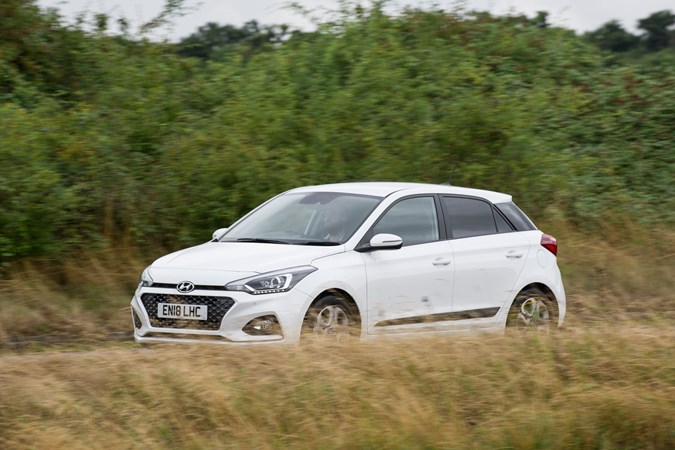




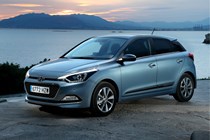

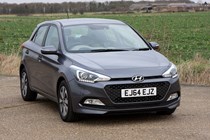

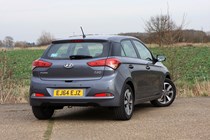
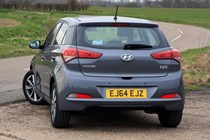
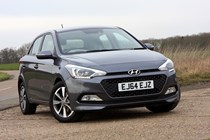
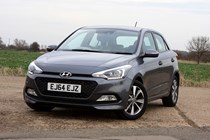
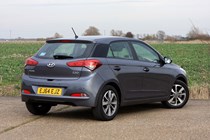
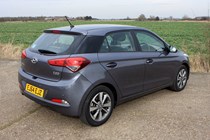
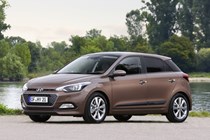
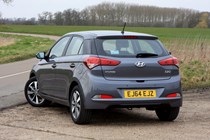
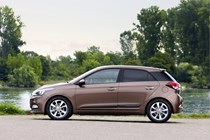
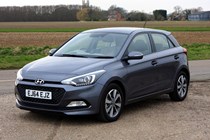
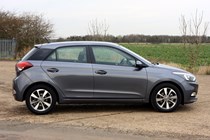
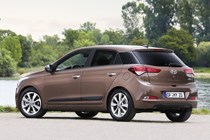
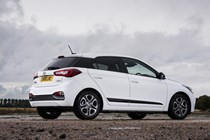
.jpg)

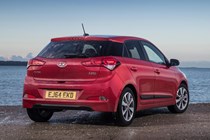
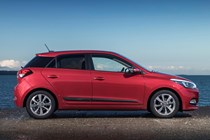
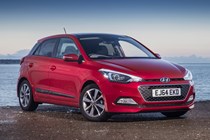






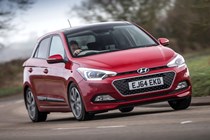
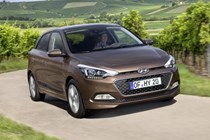
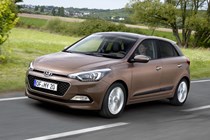

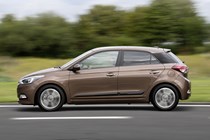

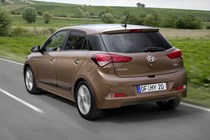
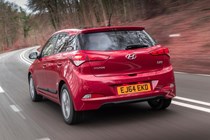
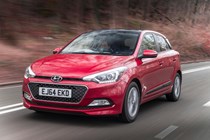


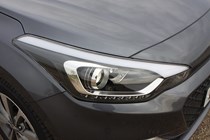
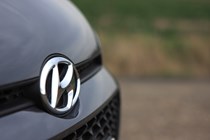
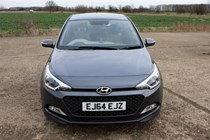
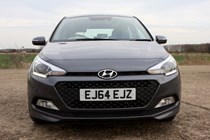
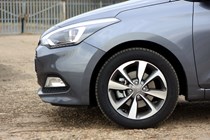
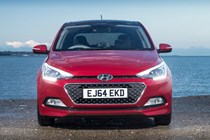
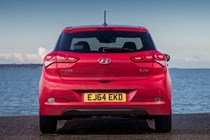
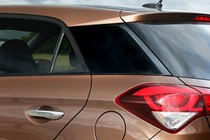
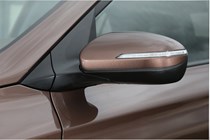
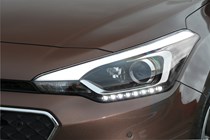



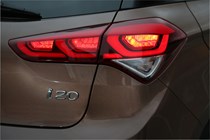
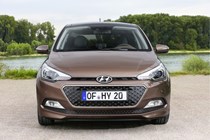
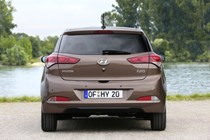
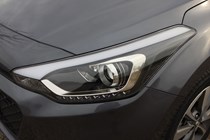
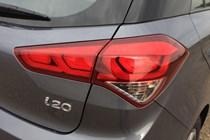
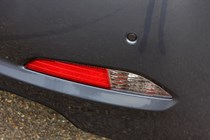
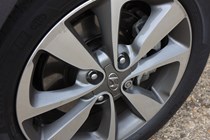
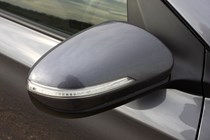
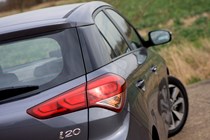
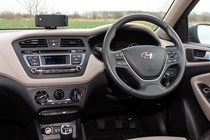
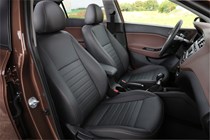
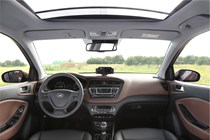
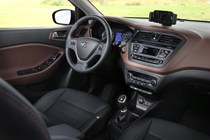
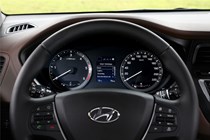
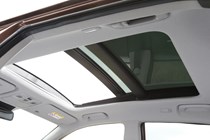
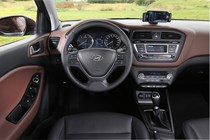
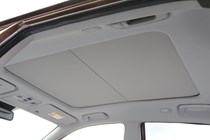





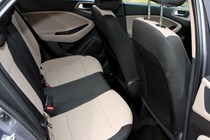
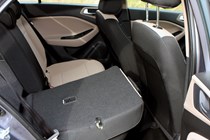
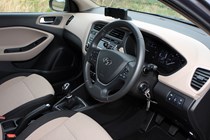
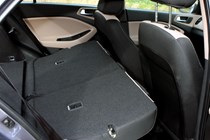
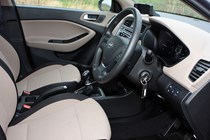
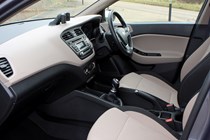
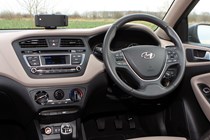
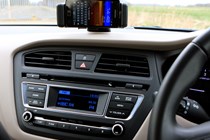
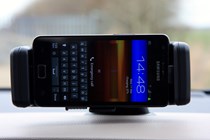
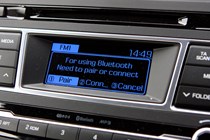
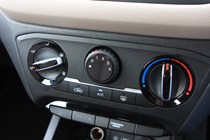
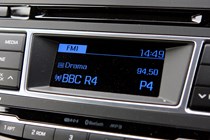
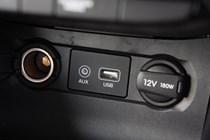
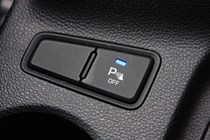
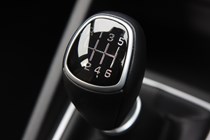
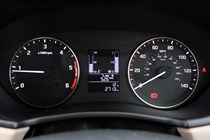
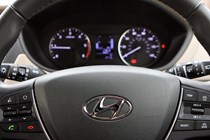
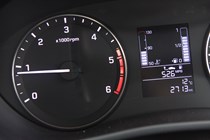
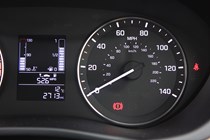
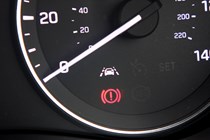
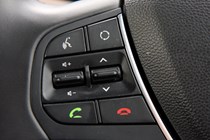
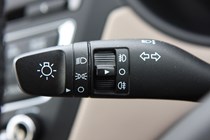
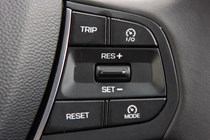
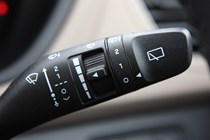
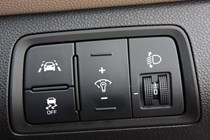
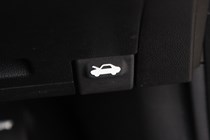
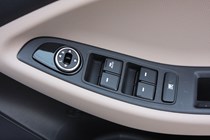
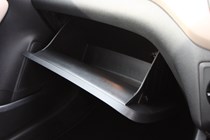
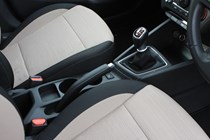


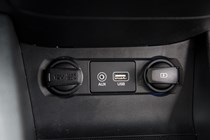
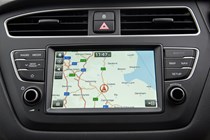



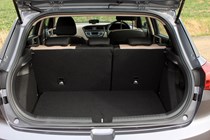
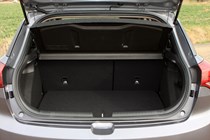
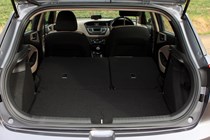
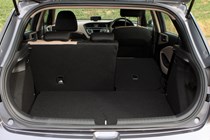
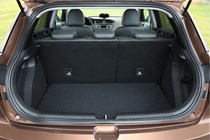
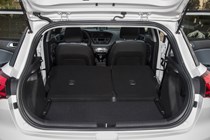


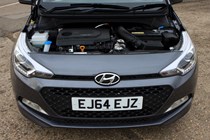
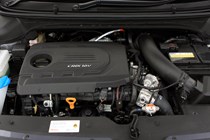
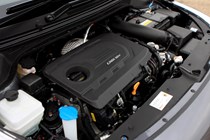
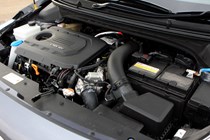



















.jpg?quality=50)







































































































